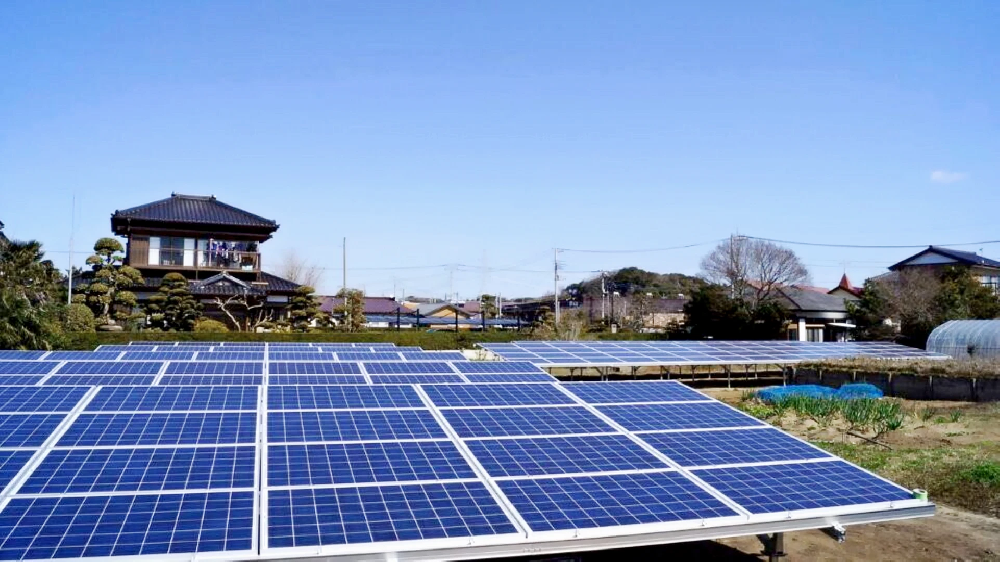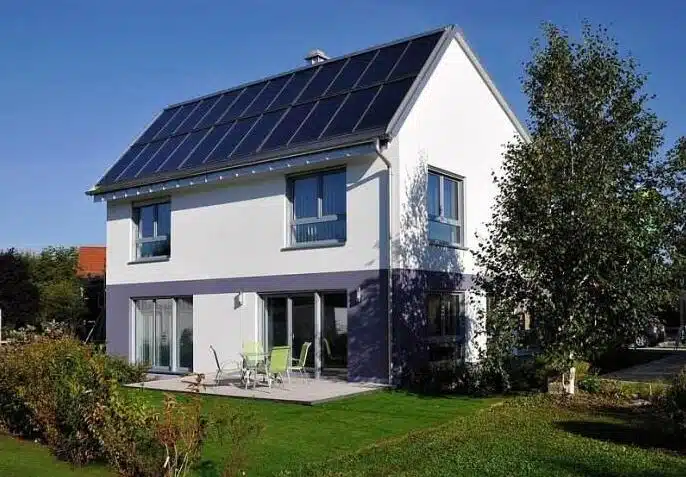
Off-grid (stand-alone) photovoltaic power generation system
2023-12-22
Off-grid photovoltaic power generation systems are mainly composed of solar cell components, photovoltaic controllers, energy storage batteries, photovoltaic inverters, AC and DC distribution boxes, photovoltaic brackets, etc. Off-grid photovoltaic power generation systems can be divided into the following forms according to the characteristics of the electrical load.
1. DC photovoltaic power generation system without battery
The characteristic of this system is that the electrical load is a DC load, and there is no requirement for load usage time. The load is mainly used during the day. The solar cell is directly connected to the electrical load. When there is sunlight, it generates electricity for the load to work. When there is no sunlight, it stops working. The system does not require the use of photovoltaic controllers and does not have electricity storage devices. The advantage of this system is that it reduces the loss of electric energy caused by the photovoltaic controller and the storage and release process of the battery, and improves the utilization efficiency of solar energy. The most typical application of this type of system is solar photovoltaic water pumps. In addition to directly pumping water for irrigation when the sun is sufficient, photovoltaic water pumps can also be used to pump water into a reservoir and store it, converting solar energy into potential energy for use at night and on rainy days.
2. DC photovoltaic power generation system with battery
The system consists of solar cells, photovoltaic controllers, batteries, DC loads, etc. When there is sunlight, the solar cell converts light energy into electrical energy for use by the load and stores electrical energy in the battery at the same time. At night or on rainy days, the battery supplies power to the load. This kind of system has a wide range of applications, ranging from solar lawn lights and garden lights to mobile communication base stations far away from the power grid, microwave transfer stations, rural power supply in remote areas, etc. When the system capacity and load power are large, it is necessary to equip a solar cell array and battery pack.
3. AC and AC and DC hybrid photovoltaic power generation systems
Compared with DC photovoltaic power generation systems, AC photovoltaic power generation systems have an additional photovoltaic inverter to convert DC power into AC power to provide power for AC loads. When there is sunlight, the photovoltaic cells convert light energy into DC power to charge the energy storage battery, and at the same time convert the DC power into AC power through the photovoltaic inverter to provide power for AC users or loads. At night or on rainy days, the DC power stored in the energy storage battery is converted into AC power through the photovoltaic inverter to supply power to the load. An AC/DC hybrid system can power both DC loads and AC loads.
off-grid system for residential use
4. Mains complementary photovoltaic power generation system
The so-called mains complementary photovoltaic power generation system is an independent photovoltaic power generation system that mainly uses solar photovoltaic power generation, supplemented by ordinary 220V AC supplementary power. In this way, the capacity of the battery components and batteries in the photovoltaic power generation system can be designed to be smaller. Basically, when there is sunshine on that day, the electricity generated by the solar energy will be used, and on rainy days, the mains energy will be used to supplement it. In most areas of our country, there is basically more than 2/3 sunny and good weather throughout the year. In this way, the system uses solar power for more than 2/3 of the year, and uses mains electricity to supplement energy for the remaining time. This form not only reduces the one-time investment of the solar photovoltaic power generation system, but also has significant energy saving and emission reduction effects. It is a good transitional method in the process of promoting and popularizing solar photovoltaic power generation. This form is similar in principle to the non-countercurrent grid-connected photovoltaic power generation system to be introduced below, but it cannot be equated to grid-connected applications.
5. Photovoltaic power generation system with automatic switching
The so-called automatic switching means that the off-grid system has the function of automatic two-way switching with the public power grid. First, when the photovoltaic power generation system generates insufficient power due to cloudy, rainy days or its own faults, the switcher can automatically switch to the public grid power supply side, and the grid supplies power to the load; second, when the grid suddenly loses power for some reason. , the photovoltaic system can automatically switch to separate the power grid and the photovoltaic system and become an independent photovoltaic power generation system. Some photovoltaic power generation systems with switching devices can also disconnect power supply to general loads and connect power supply to emergency loads when needed.
6. Wind-solar complementary and wind-solar complementary power generation systems
The so-called wind and solar complementation refers to the integration of wind power generation system into the photovoltaic power generation system, so that solar energy and wind energy can complement each other according to their respective meteorological characteristics. Generally speaking, as long as the weather is fine during the day, the photovoltaic power generation system can operate normally. However, when there is no sunshine at night, the wind is often relatively strong, and the wind power generation system can just make up for the shortcomings of the photovoltaic power generation system. The wind-solar hybrid power generation system uses solar and wind energy to generate electricity at the same time, making full use of meteorological resources, enabling day and night power generation, and improving the continuity and stability of the system’s power supply. However, it is not suitable for use in areas with poor wind resources.
In addition, in more important situations or where power supply stability is required, diesel generators, photovoltaic power generation systems, and wind turbines may be used to form a power generation system that is complementary to wind, solar, and diesel. The diesel generator is generally in a standby state or a low-power operation standby state. When the wind and solar power generation is insufficient and the battery energy storage is insufficient, the diesel generator will supplement the power supply.
